

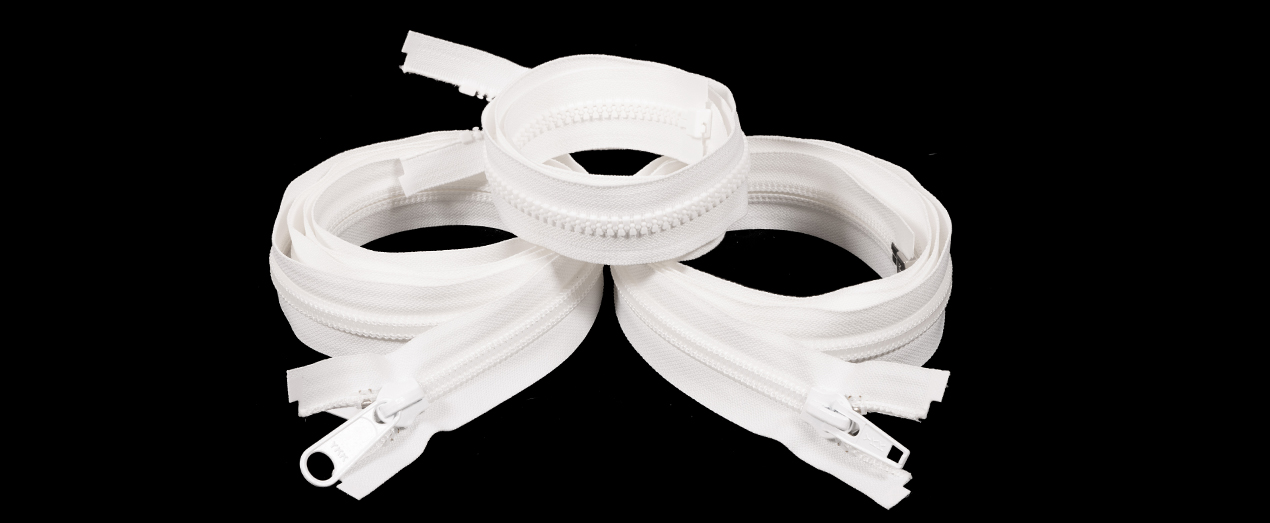
Zippers are one of the most elemental but revolutionary inventions. They drastically changed both the fabric and fashion industries. The patent for the first prototype of the zipper was owned by the inventor of the sewing machine, Elias Howe, in 1851.
The standard modern zipper is weather resistant, durable, and available in a variety of colors, materials, and sizes. Zippers are used on many different items including clothing, vehicle covers, bookbags, handbags, and more.
A zipper track has a row of teeth on each side. These teeth all have a hook and hollow. The slide moves up and down the zipper track. The slide pushes the teeth together to close the zipper track. A high-quality zipper provides a very strong bond that is difficult to break without moving the slide in the opposite direction to separate the teeth. Zippers require all of the teeth to be exactly the same size for the mechanism to work correctly.
Zippers can be used just about anywhere. These fasteners make their way into boat covers, patio enclosures, cushions, recreational gear, and apparel. With so many variants, it can be difficult to decide which type is the best choice for a specific job.
To shed some light on this, we’ve broken down and explained some of the most common zipper components and types below.

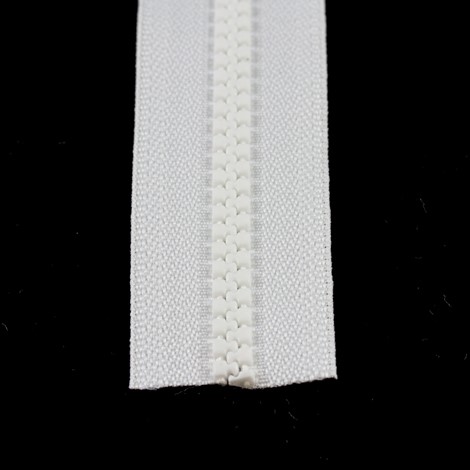

When shopping for sliders, note that there are ZIPLON-compatible sliders and VISLON-compatible sliders. In general, your zipper slider size & type must be compatible with the zipper chain you are intending on using. The first step is to match your YKK zipper chain size number with the same YKK zipper slider number. For example, a #8 zipper chain will require a #8 zipper slider..


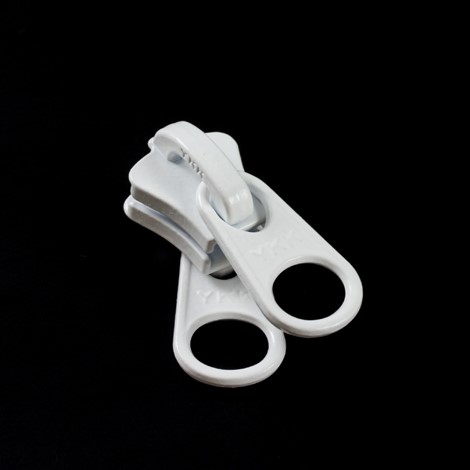
This slider type stays in place where you put it. It will not open the zipper chain unless you pull the slider.
This slider has no locking mechanism to keep it from sliding.
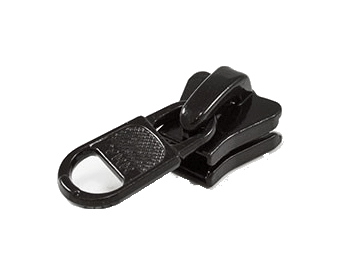
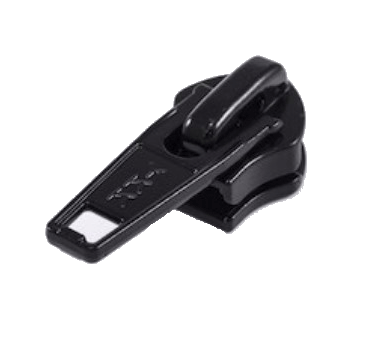
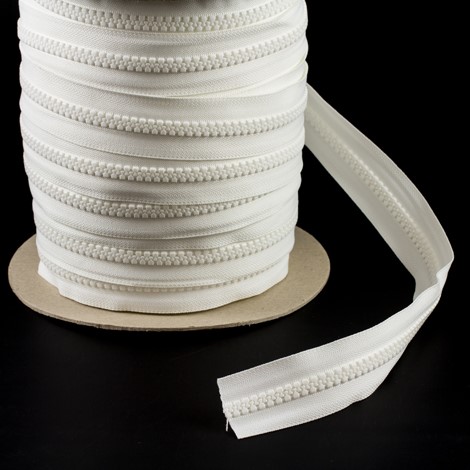

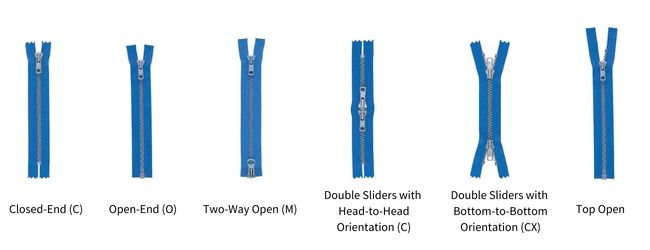
Handbags and similar products often have zipper pulls (or pull cords). These pulls allow you to easily use the zipper by extending the length of the slider. This makes it much easier to use a purse, backpack, or any other zipper with a slider that's too small or difficult to reach. We offer quality-made, easy-to-use zipper pull cords for your next project.
When it comes to zippers, choosing the right quality is paramount to ensure long-lasting performance. Opting for high-quality zippers significantly impacts their durability and overall lifespan. There's a notable difference between plastic and metal zippers in terms of their resilience to various environmental factors.
By understanding the differences between plastic and metal zippers, you can make informed decisions based on your specific application needs. Investing in high-quality zippers ensures that your projects maintain their functionality and appearance over time.
YKK is the world’s largest supplier of quality zippers as well as other fastening products. Read on to learn how to read YKK product names & understand how sizes, features, and materials can be decoded from that naming convention.
One of the quickest ways to differentiate zippers is by the chain size, or coil width, indicated via pound sign (#). The proceeding number corresponds to YKK zipper width in milimeters. For example, a #5 zipper has a wider coil width (5mm) than a #3 zipper (3mm):

The size of the zippers you need will depend on the size of your project. Make sure to measure the area you want to enclose before ordering zippers. The teeth, slider, and other parts of the zipper can also come in a variety of sizes. Full zipper tape rolls are typically sized by chain or coil width, tape width, and length. For a sizing example, refer to item #280085 above.
The materials used in zippers need to strike a balance between durability and ease of use. Zipper tape is typically made from polyester or acrylic. The teeth and sliders can be made from either plastic, resin, or metal and sometimes include UV-resistant, chip-resistant enamel paint. These materials are used for their light weight, strength, smooth surfaces, and weather capability.
The zippers and parts outlined above can all be used in custom projects or for zipper replacements and repair.
For industrial purposes, plastic zipper chains and sliders with polyester tape are generally the most stable. Plastic is lightweight, corrosion resistant, and weather stable while polyester offers high strength and low stretch. However, choosing the right zipper will depend on your specific application.
Zippers are incredibly versatile beyond just clothing. Specific types suit certain applications:
Consider intended use, environment, and aesthetics when selecting the right zipper.
The following is a basic guide and is not intended to be a comprehensive list:
When selecting zippers, it's crucial to consider the conditions and environment they will face. The right zipper type ensures optimal durability and performance for the application.
In saltwater and marine settings like boat covers and enclosures, corrosion resistance is key. Plastic zippers with polyester tape excel in these conditions. The plastic teeth resist saltwater damage while the polyester prevents moisture deterioration. This makes them ideal for applications that will be exposed to ocean air and water.
For uses like tents and gear for extreme conditions, look for zippers that can handle temperature fluctuations and moisture. Nylon coil zippers like ZIPLON are flexible and durable against rain, wind, snow, and UV rays. Their tight coil structure prevents moisture and debris from seeping in.
In heavy duty industrial uses such as equipment covers, metal zippers provide the strength and durability to withstand frequent use and abrasion. Stainless steel teeth resist corrosion and deformation under stress. Cotton tape balances strength with flexibility.
When the right zipper is matched to the environment, your projects maintain both functionality and aesthetics even under demanding conditions.
Almost everyone has experienced the unfortunate event of a zipper breaking while zipping or unzipping it. There are a few common reasons why a zipper may break.
Zipper is stuck: If your zipper is stuck, there is a good chance that there is something blocking the slider from moving. Fabric or loose threads are common reasons why a zipper gets stuck. You can use a zipper lubricant (like IOSSO® E-Z Snap, Zipzap, or YKK® ZIPPY COOL®) to lubricate the slider and free your zipper.
Zipper will not close or keeps popping up: The zipper may have a thread or cloth stuck in it, crooked teeth, or the slider may be broken. If fixing the teeth or freeing the zipper does not work, you may need to replace the zipper.
Slider pulls off: If the slider is coming off, you should replace it with a new one. Make sure to choose a slider that is the correct size for your zipper and its teeth.
Check out some of the free materials and industry insight available in our Resource Center.
#10 zippers are typically best for enclosures. #5 zippers are smaller and typically used in cushions or seating applications.
Metal sliders are better suited for environments where high resistance to water and corrosion is not needed. Plastic sliders are ideal for marine conditions as they’re rust resistant.
VISLON (“teeth”) zippers are stiffer and better for straight applications. ZIPLON (“coil”) zippers are more flexible, which makes them great for curved applications.
An auto-lock slider is like the one you’d find on a jacket (the slider stays in place where you leave it). A non-lock slider does not lock in place on the chain.
Zippers with plastic sliders are best for saltwater conditions as they do not corrode or rust.
Yes. Zipper sliders, top stops, and bottom stops can all be replaced easily (all can be found in our Zipper section).